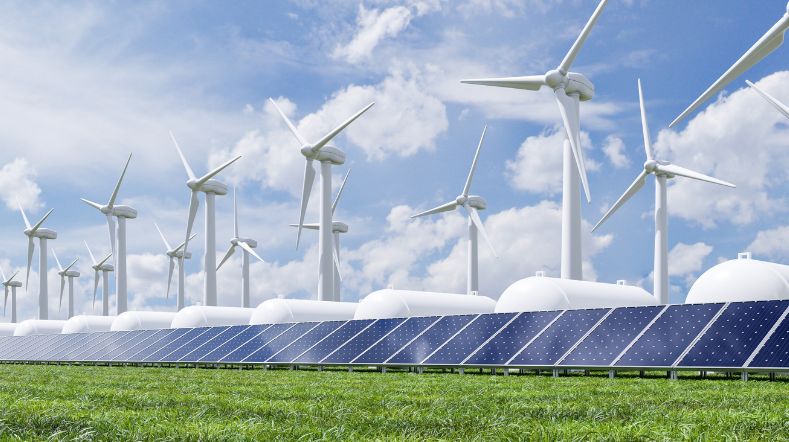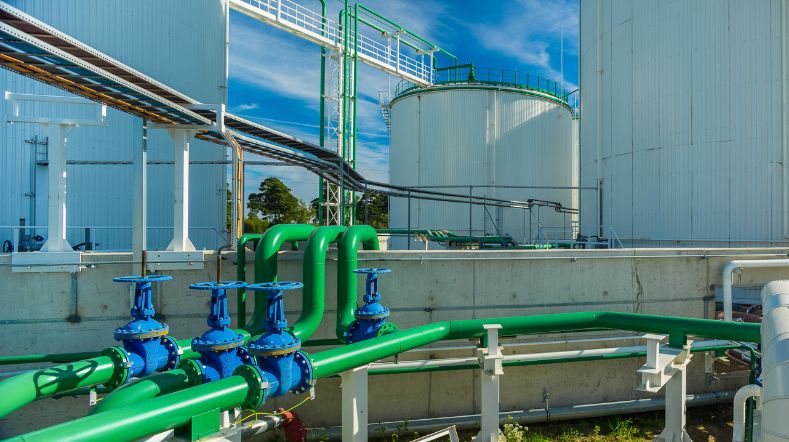
Energy system in balance with systems integration
The great advantage of fossil fuel sources is that they provide a constant flow of energy. In contrast, the supply from renewable sources is very variable. Sometimes there’s a lot of sunshine and sometimes there isn’t, so we have to balance surpluses and shortfalls. To achieve this, we’re working on a wide range of energy storage and conversion technologies.
Webinar on large-scale energy storage
The webinar, led by moderator René Peters, features Joris Koornneef and Remco Groenenberg discussing large-scale energy storage. How can we store electricity sustainably and in what form? How can we ensure that we always have energy available?
Supply and demand in balance
The fast growth in the production of sustainably generated energy from wind and solar is increasing the need for flexibility in order to keep supply and demand in balance. While the supply of fossil energy is more or less constant, that of solar and wind varies greatly. By converting and storing sustainably generated energy on a large scale in times of overproduction, we can use it in times of shortage.
The Netherlands is excellently positioned to achieve large-scale storage through innovative conversion and storage technologies. This is particularly necessary for efficiently using the fast-growing amount of electricity that will be generated offshore in the future. And for preventing shortfalls from occurring at times when the wind isn’t blowing and the sun isn’t shining.
The need for underground energy storage
In the white paper entitled ‘Underground energy storage necessary for future energy system’, we conclude together with Netherlands Energy Management (EBN) that underground energy storage is an essential part of the infrastructure. And we also conclude that this kind of storage needs to be developed. Rapid action and management are necessary in order to be sure of a flexible energy system in the future.
Converting energy
We’re experts in conversion and storage technologies, to convert electricity into another form of energy or energy carrier – and back again where necessary. Examples are converting electricity or biomass into hydrogen or green gas (Power2Gas), electricity into heat (Power2Heat), and electricity into fuels and raw materials (Power2Fuels & Feedstock). This provides great flexibility between sustainable production and use by industry and households.
VoltaChem
Together with industrial and knowledge partners, we’re working in open innovation on using sustainable power to electrify – and therefore to decarbonise – the chemical industry. This involves converting sustainable hydrogen into fuels and chemicals (Power2Hydrogen), converting electricity into heat (Power2Heat), and conversion into chemicals (Power2Chemicals).
Large-scale underground storage
Large-scale underground energy storage is a key prerequisite for a future-proof energy system and successful energy transition. Sustainably generated electricity is converted into hydrogen, for example, and transported to safe locations underground for long-term storage. Storage locations include salt caverns, depleted gas fields, and aquifers (water-bearing layers in the subsurface). This enables us to deal with fluctuations in supply and demand for days and even up to months, and to use sustainably generated energy as efficiently as possible.
Systems integration in the North Sea
Salt caverns and depleted gas fields are used for large-scale storage. Making use of empty gas fields provides opportunities to reuse existing platforms and pipelines. This is called systems integration. Everything comes together here: converting wind energy into hydrogen, using existing gas pipelines, and storage in depleted fields. This requires not only knowledge of electricity, gas, and hydrogen, but also of everything that links them, such as energy markets, networks, environmental factors, and economic feasibility.
North Sea Energy
The North Sea is an ideal environment for contributing to a climate-neutral energy system, with opportunities for large-scale wind energy, hydrogen, and underground carbon storage. The North Sea Energy research programme is looking to link these energy functions, drawing on technology, society, the market, and ecology. Together with partners, we’re putting the North Sea on the map as a model region for the European energy transition.
H-vision
H-vision aims to make significant cuts to carbon emissions from businesses at the Port of Rotterdam by producing blue hydrogen on a large scale and using it in industrial processes. Industry uses large amounts of hydrogen, especially for high-temperature processes, by burning natural gas. The plans call for the CO2 released in this process to be captured and transported to depleted gas fields under the North Sea.
Conversion and immediate use
Through conversion and storage, sustainably generated energy can be used when there’s demand for it. But conversion doesn’t always mean storage. Electricity converted into hydrogen can also be used immediately by industry in its processes or transported for use in heating the built environment. Electrons are then converted into molecules, which can be transported and stored much more cheaply. In this way, electricity generated by solar and wind can be used in every form of energy and at any time.
Heatstore
We’re coordinating the European research project Heatstore to develop technologies for storing thermal energy and to demonstrate these in practical trials. This involves various configurations in which we combine heat sources, storage techniques, and heat use.
Get inspired
Energy infrastructure and transport


Tomorrow’s hydrogen production and infrastructure: building towards a secure and robust energy system

CO2 infrastructure and transport


Expansion of energy infrastructure


European Industry & Energy Summit 2021

